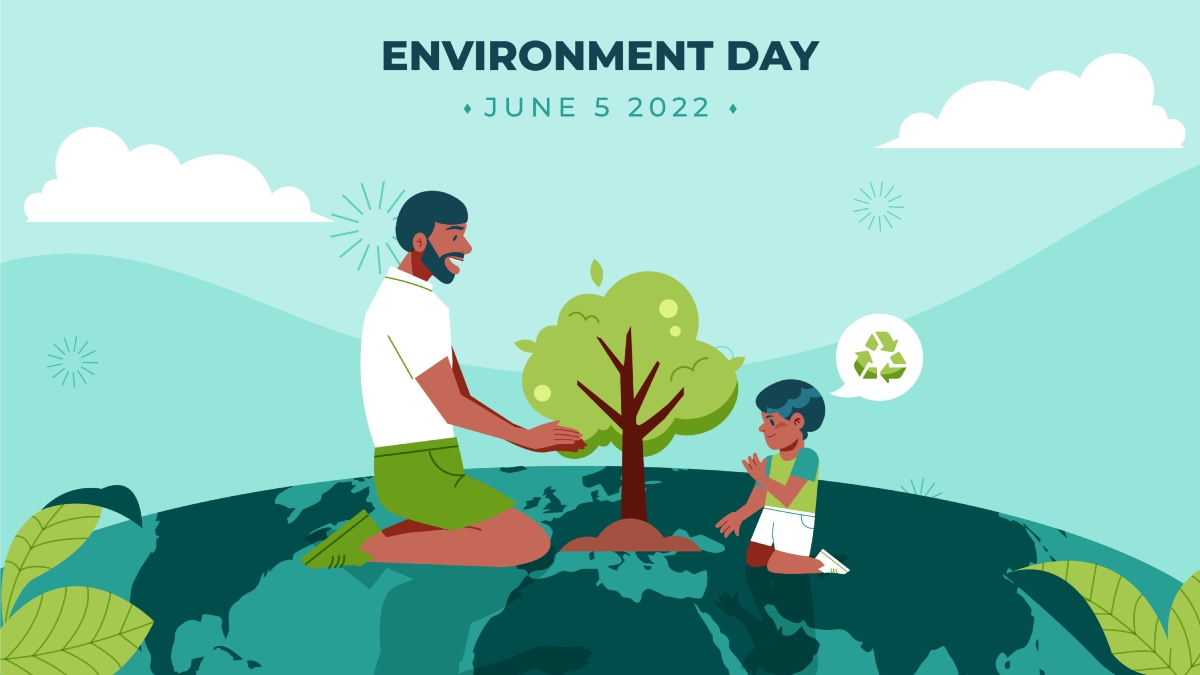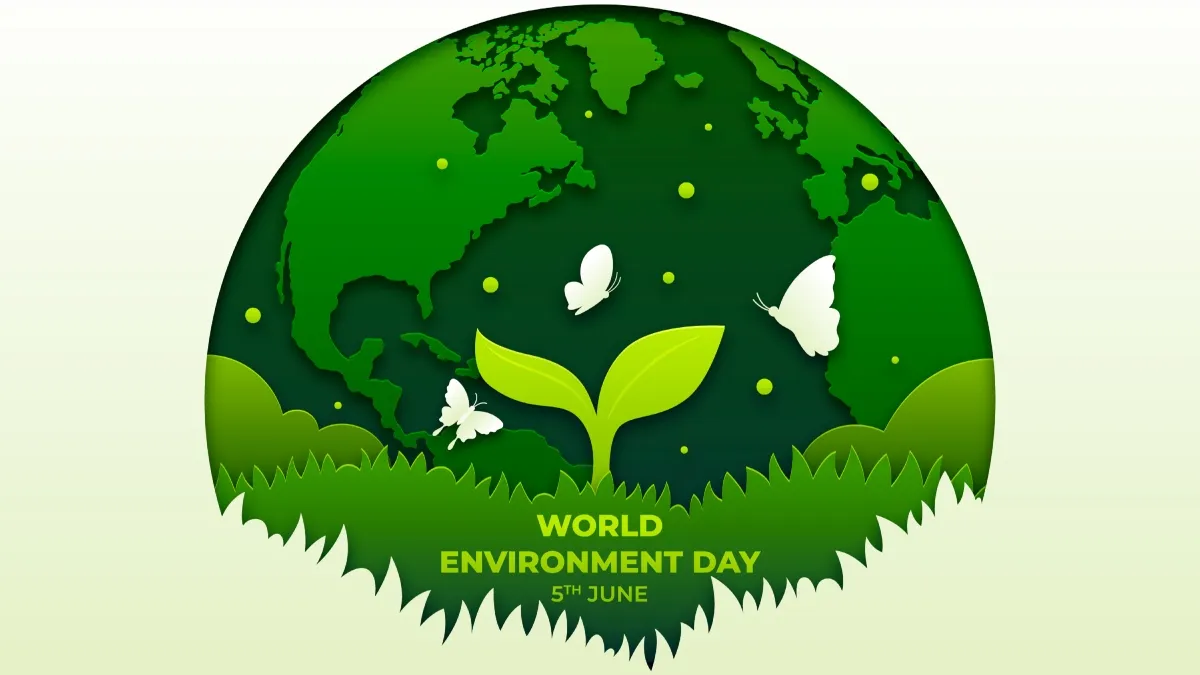- By Dr Sadhana Kala
- Thu, 05 Jun 2025 01:08 PM (IST)
- Source:JND
As the world observes World Environment Day on June 5, it is more than just a ceremonial occasion marked by speeches, tree-planting campaigns, and social media posts. It is a global wake-up call—an urgent reminder that the health of our planet is inextricably linked to our own survival and well-being. Since its inception in 1973, World Environment Day has evolved into one of the most significant platforms for environmental advocacy, uniting millions of people worldwide in defense of the natural world.
In 2025, the theme of World Environment Day, “Restore Our Earth,” emphasizes the importance of environmental restoration —a process not only of healing the planet but also of reversing the ecological damage caused by decades of exploitation, pollution, and indifference. In the face of climate change, biodiversity loss, and ecosystem collapse, the message is clear: We must act now, together, and decisively.
The Origins and Evolution of World Environment Day
World Environment Day was established by the United Nations Environment Programme (UNEP) following the 1972 Stockholm Conference on the Human Environment, the first major global meeting to discuss environmental issues. It was created to raise awareness and encourage global action on pressing environmental matters. Each year, a different country hosts the official celebration, drawing attention to specific challenges or opportunities within its region. In past years, themes have ranged from combating plastic pollution to encouraging ecosystem restoration and living sustainably.
The power of World Environment Day lies in its ability to mobilize governments, NGOs, businesses, schools, and communities. It acts as a catalyst for change, fostering collaborations that extend far beyond a single day.
Why This Day Matters More Than Ever
An escalating environmental crisis has defined the 21st century. Our planet is under unprecedented pressure:
-Climate Change: 2024 was recorded as one of the hottest years on record. Heatwaves, wildfires, droughts, and intensified storms are becoming more frequent and severe. Melting glaciers and rising sea levels pose a threat to coastal cities and entire island nations.
-Biodiversity Loss: The Earth is experiencing its sixth mass extinction, with species disappearing at an alarming rate. According to the UN, around one million plant and animal species are now at risk of extinction, with many facing extinction within decades.
-Pollution and Waste: From the air we breathe to the oceans that regulate our climate, pollution is degrading every major ecosystem. Plastic waste is choking marine life, while toxic chemicals from industries contaminate our soil and water.
-Deforestation and Land Degradation: Forests, which absorb CO₂ and preserve biodiversity, continue to be cleared at unsustainable rates. Desertification threatens food security for millions.
Each of these issues is interconnected, and their cumulative impact threatens not only the planet’s health but also economic stability, public health, and global peace.
Restoration: The Imperative of Our Time
This year’s theme, Restore Our Earth, shifts the narrative from merely protecting nature to actively repairing the damage we’ve caused. Restoration is about bringing degraded ecosystems back to life—replanting forests, reviving wetlands, rejuvenating coral reefs, and enabling wildlife to return to their habitats. It’s about transforming agricultural practices, greening our cities, and rebuilding our relationship with the environment.
Ecosystem restoration offers enormous benefits. Healthy ecosystems support agriculture, stabilize the climate, prevent floods, filter water, and provide livelihoods for billions. According to UNEP, restoring 350 million hectares of degraded land by 2030 could generate $9 trillion in ecosystem services and remove up to 26 gigatons of greenhouse gases from the atmosphere.

In 2025, the theme of World Environment Day, “Restore Our Earth” (Image:Freepik)
Individual Action: Small Steps, Big Impact
While large-scale governmental and corporate actions are crucial, individual contributions also play a vital role in environmental restoration. Each one of us is a stakeholder in this mission. Here’s how ordinary citizens can make a meaningful difference:
1.Adopt a Sustainable Lifestyle: Choose energy-efficient appliances, reduce car usage, conserve water, and opt for renewable energy sources when possible.
2.Cut Down on Plastic: Avoid single-use plastics, carry reusable bags, bottles, and containers, and support businesses that promote sustainable packaging.
3.Plant Trees and Support Green Spaces: Participate in local tree-planting drives or support organizations working on reforestation.
4.Consume Responsibly: Buy local and seasonal produce, minimize food waste, and adopt a plant-rich diet.
5.Raise Awareness: Educate others through social media, community groups, or school programs about the importance of environmental stewardship.
These actions may seem small, but their cumulative impact can create ripple effects across communities and generations.
The Role of Youth and Education
Young people are increasingly emerging as the torchbearers of the environmental movement. From Greta Thunberg’s Fridays for Future movement to youth-led reforestation campaigns in Kenya and India, the energy, passion, and innovation of the younger generation are inspiring.
Educational institutions must integrate environmental literacy into their curricula, not as a peripheral subject but as a core component of responsible citizenship. Understanding ecological systems, climate science, and sustainable living is as vital as math or language in today’s world.
Empowering youth with knowledge, tools, and platforms can cultivate a new generation of environmental leaders who are equipped to tackle the challenges ahead.
Policy, Innovation, and Global Cooperation
Restoring the Earth also requires systemic change, including policy reform, corporate responsibility, and international cooperation. Governments must enact and enforce robust environmental regulations, incentivize green technologies, and commit to international agreements such as the Paris Climate Accord and the Kunming-Montreal Global Biodiversity Framework.
At the same time, businesses play a pivotal role. Sustainability must be embedded in corporate strategy—not just as a branding tool but as a guiding principle. From reducing carbon footprints to innovating eco-friendly products, industries must shift toward circular, regenerative business models.
Technological innovations also hold promise. Artificial intelligence, satellite monitoring, and data analytics are helping to track environmental changes in real-time. Breakthroughs in clean energy, carbon capture, and sustainable agriculture can accelerate the transition toward a healthier planet.
The Equity Dimension
Environmental justice is an integral part of the restoration process. Marginalized communities—especially indigenous peoples, women, and low-income populations—often bear the brunt of ecological degradation despite contributing the least to it. These communities must not only be protected but also actively included in restoration efforts.
Recognizing traditional knowledge systems, securing land rights, and ensuring inclusive decision-making are essential steps toward equitable and effective environmental action.
Looking Ahead: A Shared Responsibility
World Environment Day is not just a date on the calendar; it is a moral imperative and a shared responsibility. Whether you’re a policymaker or a student, a farmer or a tech CEO, the message is the same: the Earth needs us, and we need the Earth.
Environmental degradation did not happen overnight, and restoration will take time, commitment, and global solidarity. But with urgency, unity, and purpose, change is possible.
As the late environmentalist Wangari Maathai once said, “It’s the little things citizens do. That’s what will make the difference. My little thing is planting trees.”
Let each of us find our own “little thing” and begin. The time to act is not tomorrow. It is today—this World Environment Day, and every day thereafter.
Conclusion
World Environment Day serves as a global reminder of the fragility of our planet—and the resilience it can demonstrate when given a chance to heal. As citizens of Earth, the choices we make today will define the world that future generations inherit. Let’s ensure it's a world teeming with life, not struggling for survival.
Together, let us restore our Earth.
Sidebar: Fast Facts About World Environment Day
- One million species are at risk of extinction due to human activity
- Deforestation accounts for approximately 10% of global greenhouse gas emissions
- Plastic waste in oceans could outweigh fish by 2050 if trends continue
(Note: Dr (Prof) Sadhana Kala is a USA-trained robotic & laparoscopic surgeon, Uppsala University, Sweden, trained fertility specialist, Icon Endoscopic Surgeon of North India, and National Icon Endoscopic Surgeon of India. She is rated as India's Best Gynecologist by Google.)
(Disclaimer: The views expressed in this article are the personal opinions of the author.)

